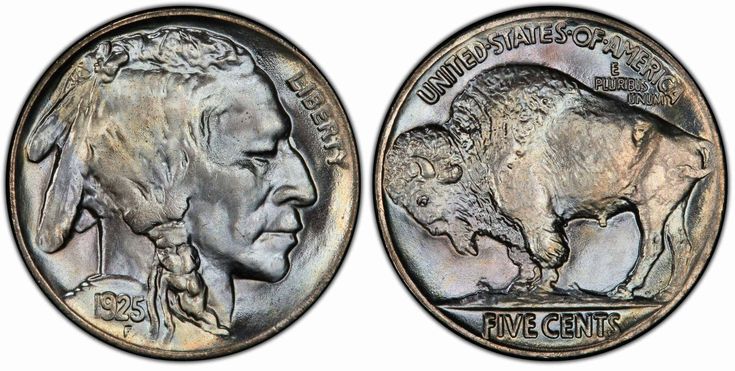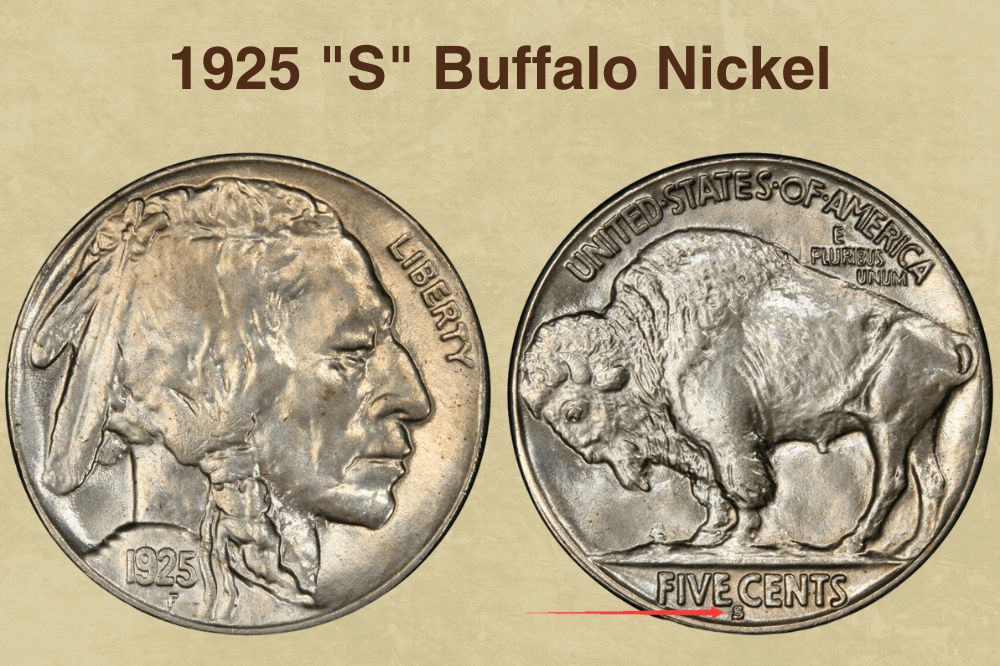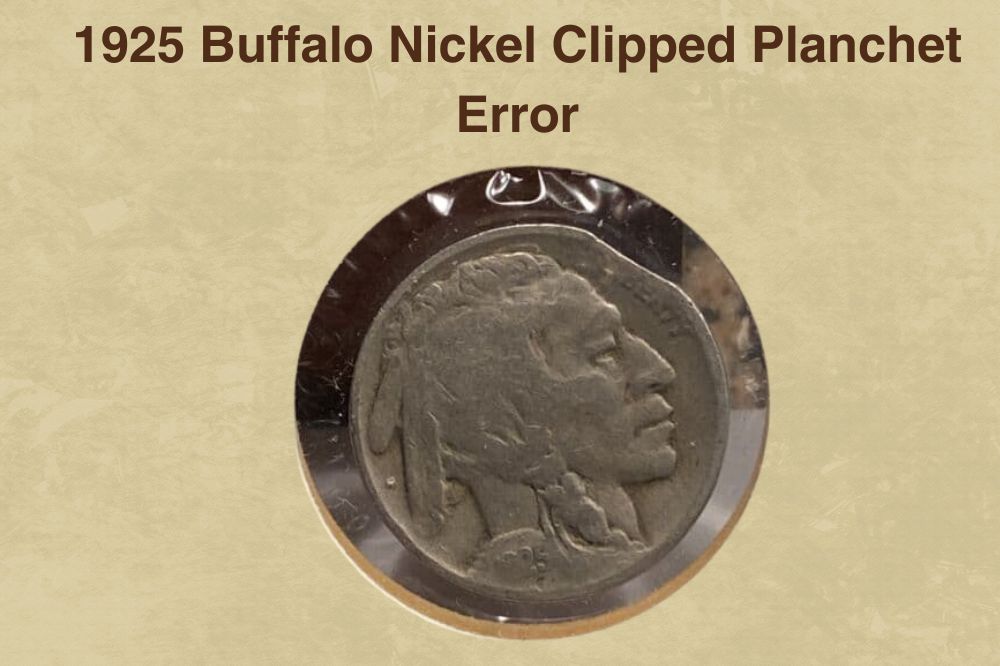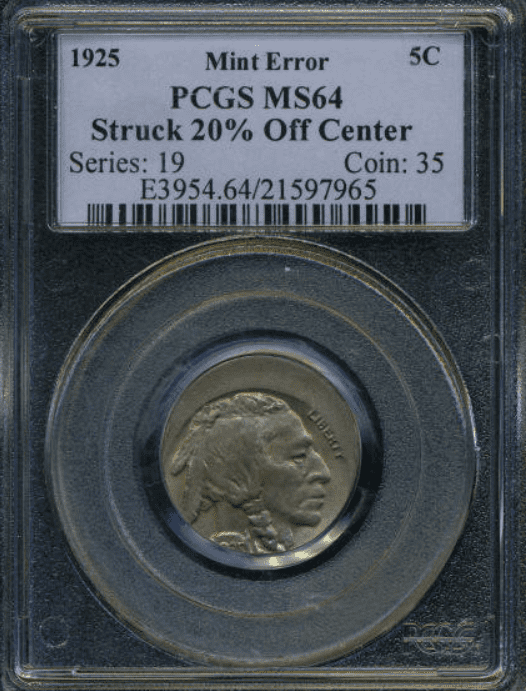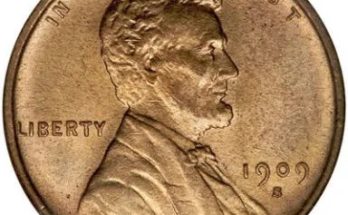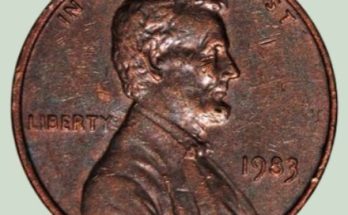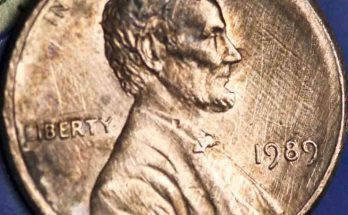For those who appreciate the artistry of vintage coins, the 1925 Buffalo Nickel is a true masterpiece. This stunning coin showcases exquisite design and embodies a rich history that makes it a desirable piece for any serious collector.
If you’re curious about the value of this vintage treasure, then you won’t want to miss our comprehensive guide. This article covers everything you need to know about the 1925 Buffalo Nickel value.
We’ll go over all the important aspects of this iconic coin, from its design to its historical significance. So, let’s cut to the chase and dive right in!
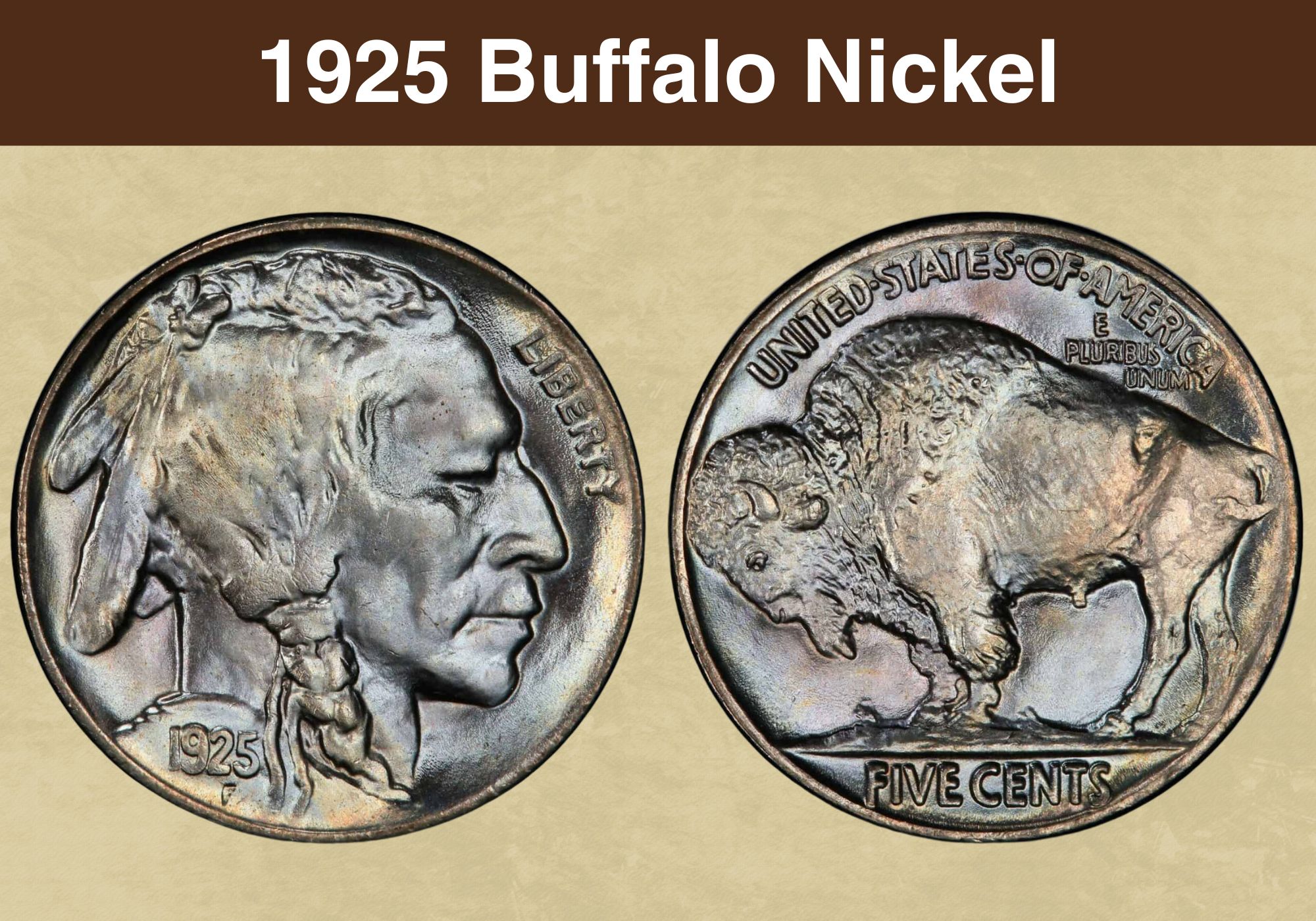
1925 Buffalo Nickel Value Chart |
||||
| Mint Mark | Good | Fine | Extremely Fine | Uncirculated |
| 1925 No Mint Mark Buffalo Nickel Value | $3 | $7.50 | $25 | As high as $17,500 |
| 1925 “D” Buffalo Nickel Value | $20 | $45 | $195 | As high as $12,000 |
| 1925 “S” Buffalo Nickel Value | $7.50 | $35 | $200 | As high as $50,000 |
1925 Buffalo Nickel Grading
Grading is a crucial part of evaluating the value and authenticity of a 1925 Buffalo Nickel. The coin’s condition plays a crucial role in determining its grade, which can range from Poor to Mint State.
Professional coin grading services, such as the Professional Coin Grading Service (PCGS) and the Numismatic Guaranty Corporation (NGC), use a standardized system to grade coins based on their wear, luster, and overall appearance.
It is important for collectors to understand the grading system to assess their coins’ value accurately. For more information on coin grading.
| # | Grade |
|---|---|
| 1 | Basal State-1 |
| 2 | Fair |
| 3 | Very Fair |
| 4, 5, 6 | Good |
| 7, 8, 10 | Very Good |
| 12, 15 | Fine |
| 20, 30 | Very Fine |
| 40 | Extremely Fine |
| 50 | About Uncirculated |
| 60 | Mint State |
| 65 | Mint State |
| 70 | Mint State |
Please check our grading guides to know your coin scale, It’s the necessary step to know the exact value of your coin.
1925 No Mint Mark Buffalo Nickel Value
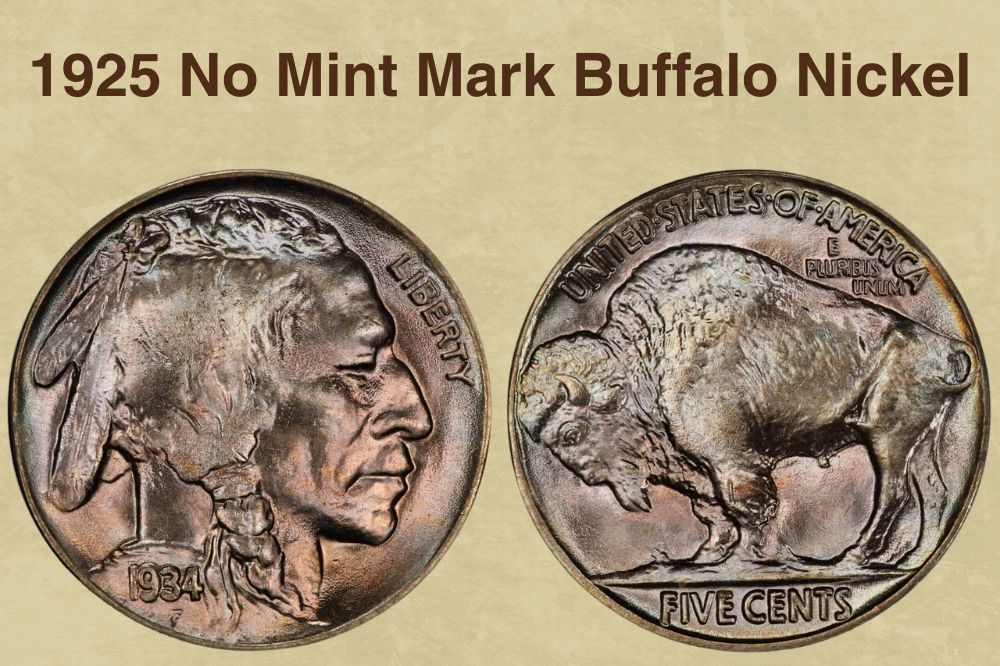
The Buffalo Nickel, often known as the Indian Head Nickel, was created by James Earle Fraser and was initially struck in 1913. It was produced until 1938. Due to its rarity and distinctive design, the 1925 Buffalo Nickel without a mint mark is especially valued.
The obverse side of the coin depicts the portrait of a Native American chief, which Fraser fashioned after three different people: Chief Iron Tail of the Lakota Sioux, Chief Two Moons of the Cheyenne, and Chief John Big Tree of the Seneca.
The reverse side of the coin depicts an American bison, which is thought to be based on a bison named Black Diamond that once roamed in New York City’s Central Park Zoo.
James Earle Fraser, the Buffalo Nickel’s creator, was a student of Augustus Saint-Gaudens, one of the most notable American sculptors of the late nineteenth and early twentieth century.
The coin’s elaborate design, filled with depth and detail, is a clear example of Fraser’s sculptural background. The Buffalo Nickel is regarded by many as one of the most exquisite coins ever made in the United States.
The 1925 Buffalo Nickel is not only beautiful but also historically significant. The currency was produced during a time when America endured substantial transformation. The Roaring Twenties, or the 1920s, were a prosperous and revolutionary decade.
But at the same time, hostilities were growing between Native People and the federal government, which prompted the Indian Citizenship Act to be passed in 1924.
Minted in Philadelphia, the total mintage of the 1925 Buffalo Nickel without a mint mark was 35,565,100. Due to its distinctive appearance and fascinating history, the 1925 Buffalo Nickel without a mint mark is nevertheless considered a highly collectible coin even though it has a relatively high mintage.
The 1925 Buffalo Nickel is an alloy, also referred to as “cupronickel,” consisting of 75% copper and 25% nickel. The coin weighs 5 grams and has a diameter of 21.2 millimeters.
The 1925 Buffalo Nickel without a mint mark’s value can differ considerably, just like other vintage coins, based on its condition, rarity, and historical relevance.
While a coin in good condition might only be worth $3 to $4, a well-kept, uncirculated 1925 Buffalo Nickel without a mint mark can be worth as much as $17,500.
It’s also interesting to note that the Buffalo Nickel wasn’t immediately well-liked when it was initially released in 1913. The coin’s unusual design drew criticism from people who thought it was too “busy” and challenging to read.
Some people took issue with the coin’s depiction of a Native American, saying it was disrespectful and demeaning. In spite of the criticism, the Buffalo Nickel eventually rose to become one of the most cherished and iconic coins in American history.
1925 “D” Buffalo Nickel Value
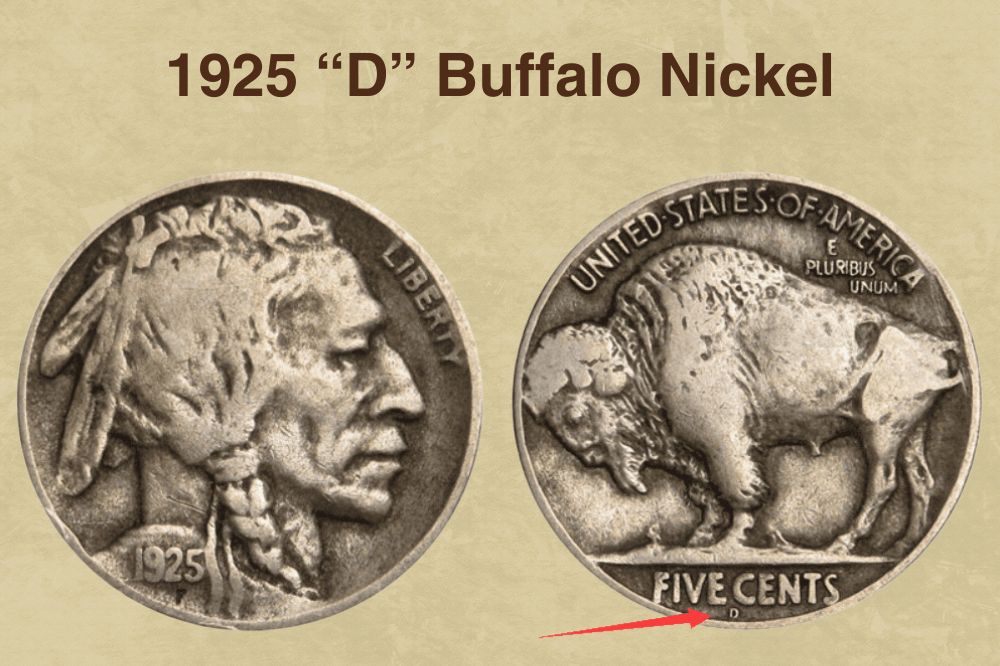
Like its previous variant, the 1925 “D” Buffalo Nickel is not behind in terms of demand and collectability. The coin’s collector value is increased by the “D” on it, which stands for the Denver Mint, where it was made in 1925.
James Earle Fraser also designed this version of the Buffalo Nickel series. The obverse side of the 1925 “D” Buffalo Nickel features the image of a Native American chief, while the reverse side has the image of an American bison.
The reverse design of the 1925 “D” Buffalo Nickel is an intriguing characteristic. The legendary American bison known as “Black Diamond,” who once resided in New York City’s Central Park Zoo, is represented on the coin. Prior to producing the coin’s design, Fraser is rumored to have visited the zoo and seen the animal up close.
The 1925 “D” Buffalo Nickel serves as a physical reminder of a pivotal time in American history. The Native American head and American bison on the back of the coin act as a constant reminder of the nation’s rich natural and cultural heritage.
The 1925 “D” Buffalo Nickel is a rare coin because only 4,450,000 of them were produced. The coin has a diameter of 21.2 millimeters, weighs 5 grams, and is made up of 75% copper and 25% nickel.
The 1925 “D” Buffalo Nickel’s value is greatly enhanced by its scarcity. Its value might vary greatly based on the coin’s condition, variety, and historical importance.
While a coin in lousy condition might only be worth a few dollars, a well-kept 1925 “D” Buffalo Nickel in uncirculated condition can be valued at as high as $12,000.
Some specimens can fetch even higher values at auctions like this rare 1925 “D” Buffalo Nickel. Graded MS66, the coin was sold for an impressive $57,500 at an auction held in 2007.
The location of the mint mark on the 1925 “D” Buffalo Nickel is an intriguing feature. The “D” mint mark appears on the coin’s back side, directly underneath the denomination.
The mint mark was often found on the coin’s obverse side for other Buffalo Nickels made in Denver; thus, the 1925 “D” Buffalo Nickel’s positioning is distinctive.
